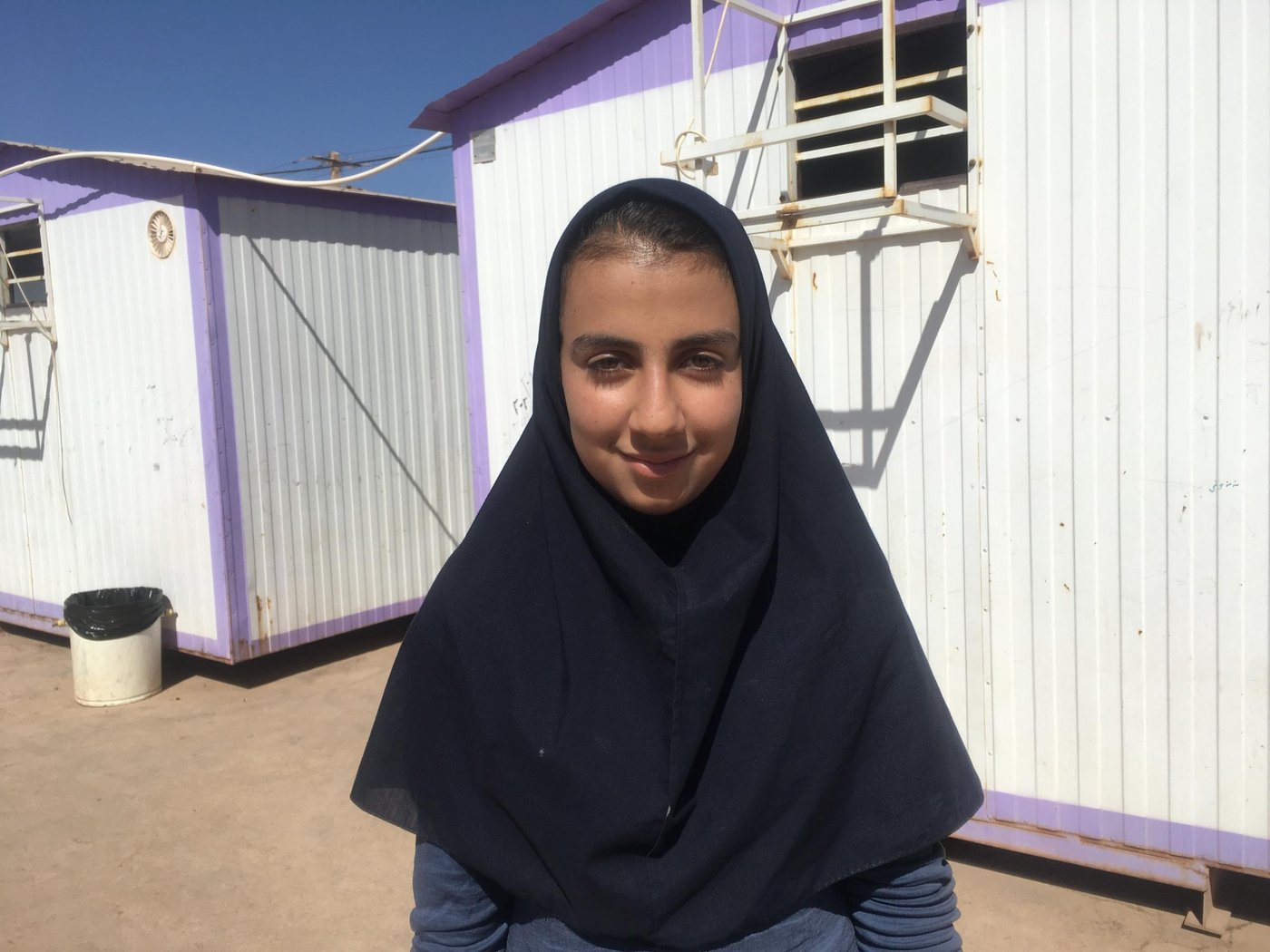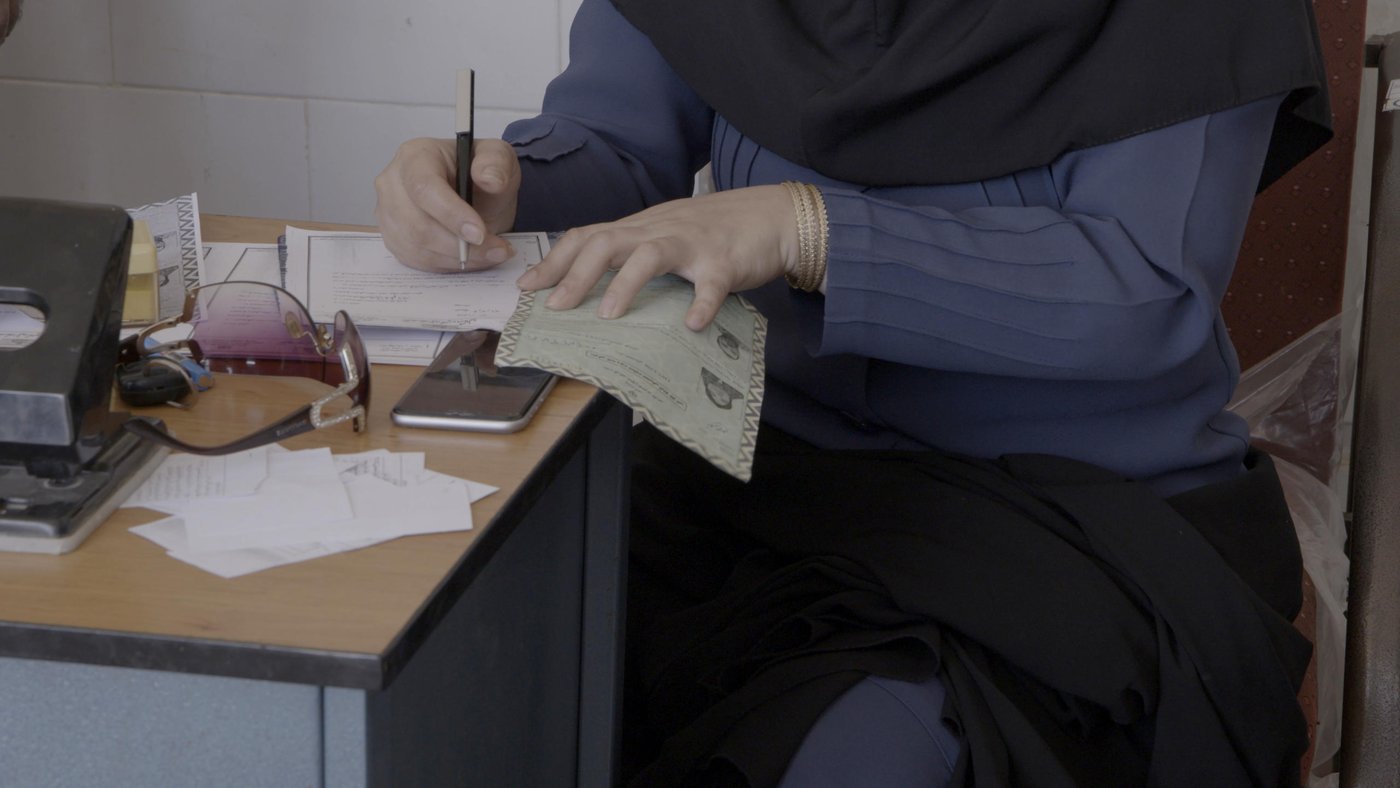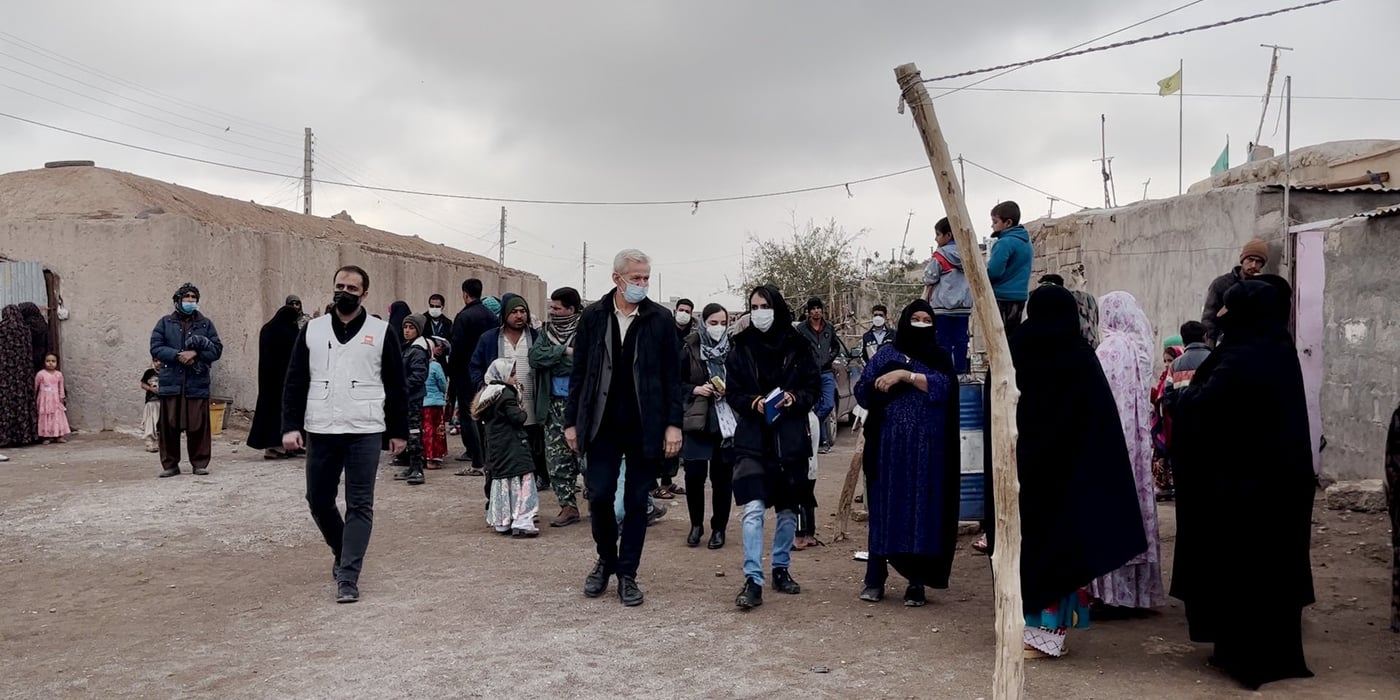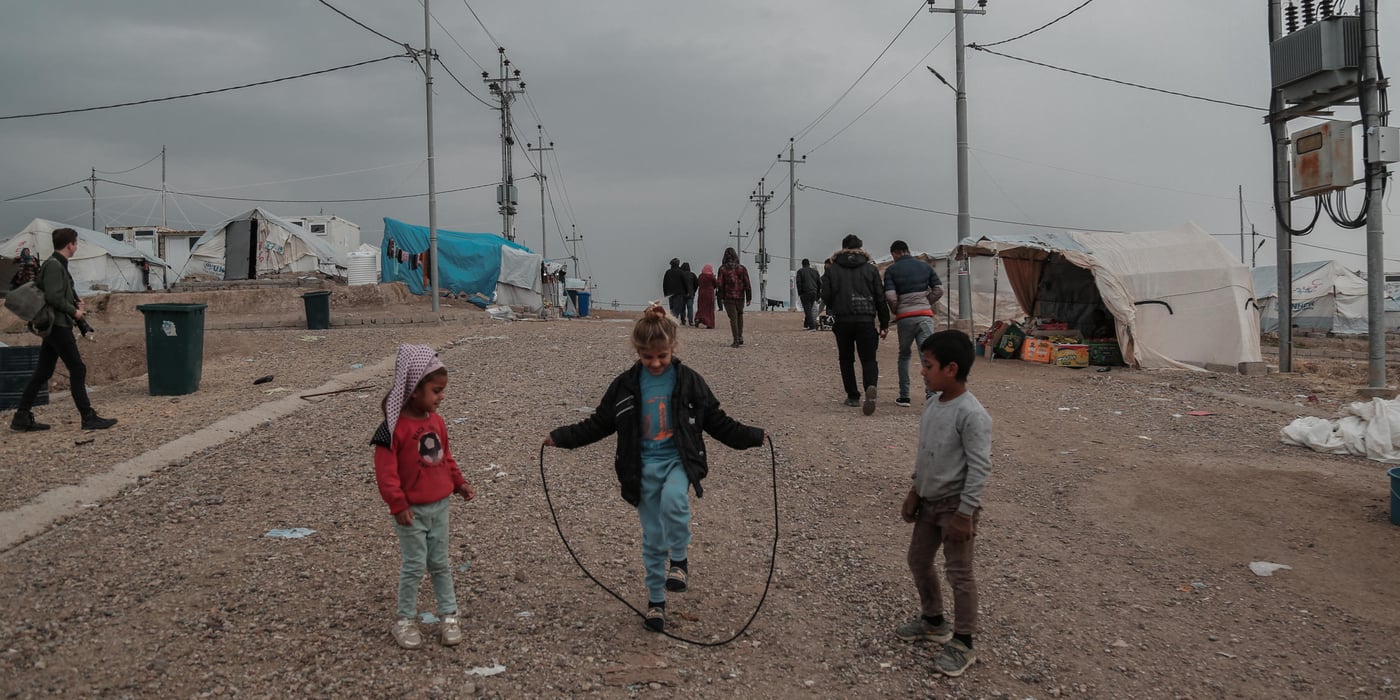
It’s 23 September, first day of autumn. The day when, after three months of summer break, schoolgirls and boys throughout Iran return to a new year of studies. Over the past three years, Iranian public schools have also opened their doors to Afghan children without legal documentation – children who would otherwise not have the right to attend school.
Better than anything in the world
Eleven-year-old Arezoo is enthusiastic and hopeful on the first day of another school year. She lives in Dasht-e-Zahmatkeshan, a settlement in Kerman province in south-east Iran. This year she’ll be studying in the fifth grade and is excited to reunite with her friends.
“Learning is better than anything in the world,” she says, repeating several times how valuable studying is for her. “I know of others who haven’t been able to learn anything, who haven’t been to school. They feel very sad.”
In 2015, Iran’s Supreme Leader issued a decree that enables every Afghan child of school age access to Iranian schools regardless of their legal status. Children lacking any form of legal documentation could apply for a document commonly known as the blue card, which makes it possible for them to go to school.

Speaking the same language
This is particularly significant considering that today, more than half of the world’s refugee population is school-aged children. They are five times more likely to be out of school than non-refugee children. Many of these children may not always benefit of having their access to education provided by host countries. In Iran, most Afghan children have the advantage of speaking, reading and writing the same language as their Iranian classmates. Farsi, Iran’s official language, and Dari, the language spoken by the majority of Afghans, are very similar.
In Kerman province, where the Norwegian Refugee Council (NRC) has worked since 2012, over 30,000 Afghan schoolchildren attend class together with their Iranian classmates. Close to 10,000 of them are undocumented and blue card holders. The decree has also resulted in a higher demand for enrolment in schools, which has lead to pressure on the educational infrastructure. Where normal standards in Iran would see a maximum of 25 pupils per classroom, schools in Kerman currently accommodate 40 to 45 pupils in each class, and most operate in shifts.
Because of this, additional schools and teachers are needed more than ever, according to Olivier Vandecasteele, NRC’s country director in Iran. “International support is essential to ensure that Afghan children, particularly those who are undocumented, are not only able to enter the formal schooling system, but also to continue their education and complete primary and secondary school,” he says.

NRC’s education work in Iran
NRC has been working closely with the Bureau of Aliens and Foreign Migrants (BAFIA) and the Department of Education in Kerman to support 19 schools in the province. We have rehabilitated school buildings and classrooms, including unused school buildings that were urgently needed to meet the additional numbers of pupils.
NRC has repaired electrical wiring, upgraded sewage systems and waterproofed school buildings. We’ve also constructed latrines and water points for the children to access safe drinking water. We have equipped classrooms with additional desks, chairs, blackboards, air-conditioning and heating to provide a safe and pleasant environment for pupils and teachers alike. Education increases children’s physical and psychosocial protection and we provide extended support for sports equipment and educational aid kits.
Through education-related funding by the Directorate-General of European Civil Protection and Humanitarian Aid Operations (ECHO) and the German Federal Foreign Office (GFFO), we have built new schools, including the Zangiabad school for boys located on the outskirts of Kerman, which opened at the start of this school year. The school has ten classrooms and accommodates 266 Afghan pupils, 120 of whom are undocumented.
Read more about The Norwegian Refugee Council's work in Iran here.





